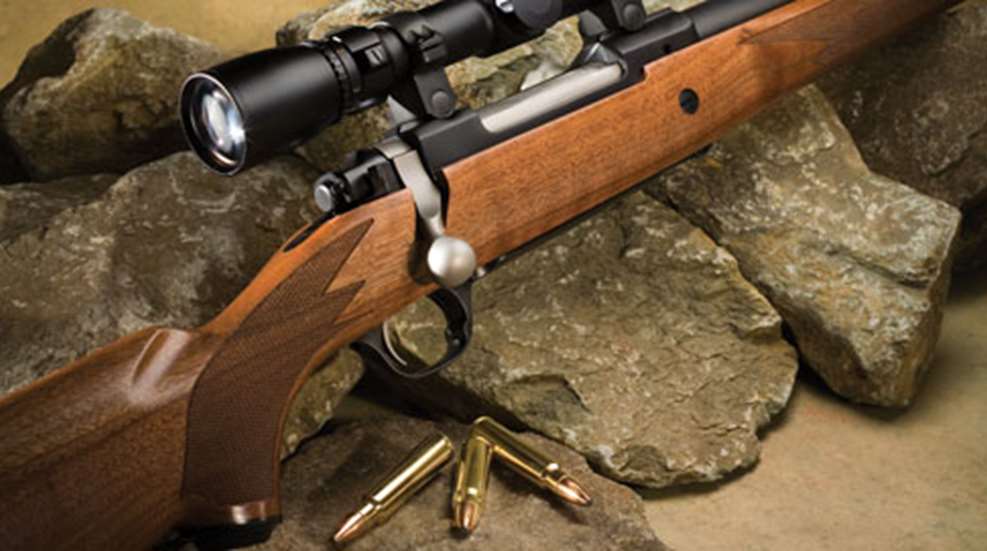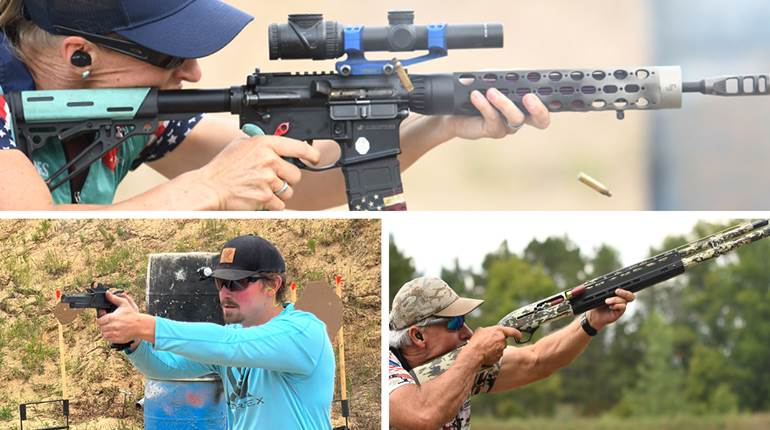
One hundred years ago the Titanic sank, Boston’s Fenway Park opened and Ty Cobb scored the first run at Tiger Stadium. There were about 8,000 automobiles in the entire United States and the population of Las Vegas, Nev., was 30. In the U.S. hunters were enamored with the .30-30 Win., the .30-06 Sprg. and that new-fangled smokeless gunpowder. Well-heeled hunters from the U.S. and Britain were heading to Africa for adventure and trophies, and they did not want to be burdened with smokey old cartridges the size of a nickel cigar. These hunters wanted to take advantage of the increased energy and power that smokeless powder offered. They wanted a rifle that shot flat and hit with enough authority to knock down the big, dangerous stuff—lions, buffalo and even elephants.
The time-honored and very conservative firm of Holland & Holland still had Henry Holland—one of the original partners—at the helm. A competing firm had already brought out the 9.5 mm Mannlicher-Schoenauer in 1910. Known in Britain as the .375 Nitro Express Rimless, the Brits took some umbrage toward an upstart encroaching into what they considered their African business. Holland’s first answer to the Italian rouge was the .400/.375, the first cartridge to feature a belt for headspacing purposes. It was also known as the .375 Velopex. Designed so that it would fit into a standard Mauser 98 action, the .375 Velopex was the first short magnum as well. It launched a 270-grain bullet at 2,175 fps, which did not endear it to hunters. They wanted more power and a flatter trajectory.
Two years later Holland & Holland introduced the .375 Belted Rimless Nitro Express—known the world over as the .375 Holland & Holland Magnum—along with its rimmed brother the .375 Flanged Nitro Express for double rifles. Rimmed cartridges did not feed reliably from rifles with magazines, and the shoulder of the cartridge was considered too small to headspace dependably. Initially it was loaded with Cordite in three bullet weights, a 235-grain bullet at 2,850 fps for light, thin-skin game, a 270-grain bullet at 2,650 fps for medium-size game and a 300-grain bullet at 2,550 fps for large, dangerous game.
The three-seven-five—as it is often referred to—became an instant hit the world over. Professional hunters and guides who hunt large, dangerous animals consider this cartridge to be the best all-around extant. The 270-grain bullet shoots as flat as a 180-grain .30-06, yet has nearly twice the energy delivered to a target at any given range. Switch to 300-grain solids, and you have a stopper rifle capable of flattening a Cape buffalo or lion. The .375 is the minimum caliber one can use on elephant in most countries.
On this side of the pond there are those who say that the .375 is too much gun for North American critters. Don’t tell that to Alaskan bear guides who may have to crawl into an alder thicket to retrieve a bear that a client scratched. In south Texas, where they hunt the tough Asian antelope nilgai, the preferred cartridge is the .375 H&H Mag. I once put three Fail Safes—a bullet noted for its toughness—from a .338 Win. Mag. into the shoulder of a nilgai at about 125 yards. You could cover the group with you hand, and the tough old bull still needed a finishing shot, so I wouldn’t argue against the centurion magnum.
There are those who argue the .375 H&H has some pretty stiff recoil. While it’s probably not the gun to take on a day-long prairie dog shoot, I have found it to be fairly well behaved, provided that the rifle stock is straight and well designed. I took a Safari Grade Model 70 Winchester to South Africa in 2004 and shot seven animals with it ranging from warthog to eland, and I did not find its recoil to be objectionable. My current .375 is another Model 70 manufactured in 1954. I’m good for about 20 rounds off the bench for a day—enough to sight in or test a load.
Handloaders can increase the versatility of this already multitalented cartridge. Bullets as light as 200 grains are available and can be sent downrange at 3,195 fps, which should easily cover any deer or pronghorn that suits one’s fancy. The aforementioned 300-grainers can be had as an expanding bullet or a solid to provide bone-smashing authority for the bigger stuff. Those who really want the deepest penetration can get 325- to 350-grain bullets with sectional densities running .330 to .356 and send them downrange at between 2,380 and 2,470 fps yielding better penetration than the 500-grain .458 bullet at 2,240 fps. A tip on handloading the three-seven-five: Neck sizing or just touching the shoulder on the fired case will increase case life a bit. Headspacing on the shoulder, rather than the belt, will limit case-length growth, thereby also lengthening case life somewhat.
Variations on the .375 H&H Mag. include the wildcat .375 Ackley Improved and the .375 Wby. Mag. Both cartridges blow out the body taper of the H&H cartridge to increase case capacity, hence velocity. Whether such “improvements” are worth while is pretty subjective.
The .375 H&H Mag. has served as the parent cartridge to no less than 31 cartridges ranging from the .244 H&H Mag. to the .470 Capstick. Standard-length magnum descendants run the gamut from the .257 Wby Mag. to the .458 Win. Mag. and include two of my favorite cartridges, the .300 and .338 Win. Mags. There are even short-magnum versions: the 6.5 Rem. Mag., .350 Rem. Mag. and the .450 Marlin. Wildcatters have also used the .375 H&H to produce cartridges that could boggle the imagination. Yep, this centurion has been fruitful and multiplied.
Gunnies seem to like to comtemplate: “If could have but one rifle (or pistol, or shotgun).” Personally, I find it horrific to imagine, but I have on occasion submitted to engaging in this banter. I started out with the .30-06 and killed a pile of game with it, and even won a few matches with it. It will always have a special place in my heart—a first love sort of thing. My .270s—both the original Winchester version as well as the WSM—have performed virtually flawlessly on pronghorns to caribou and a lot more. I can’t imagine life without them. And as I have already mentioned, I am quite fond of my .300 and .338 Win. Mags. I won’t even get into the varmint cartridges now. But if someone twisted my arm and threatened to shoot my dogs in order to get me to choose but one caliber to hunt with for the rest of my life, I’d choose the three-seven-five in a heartbeat and never look back.





































